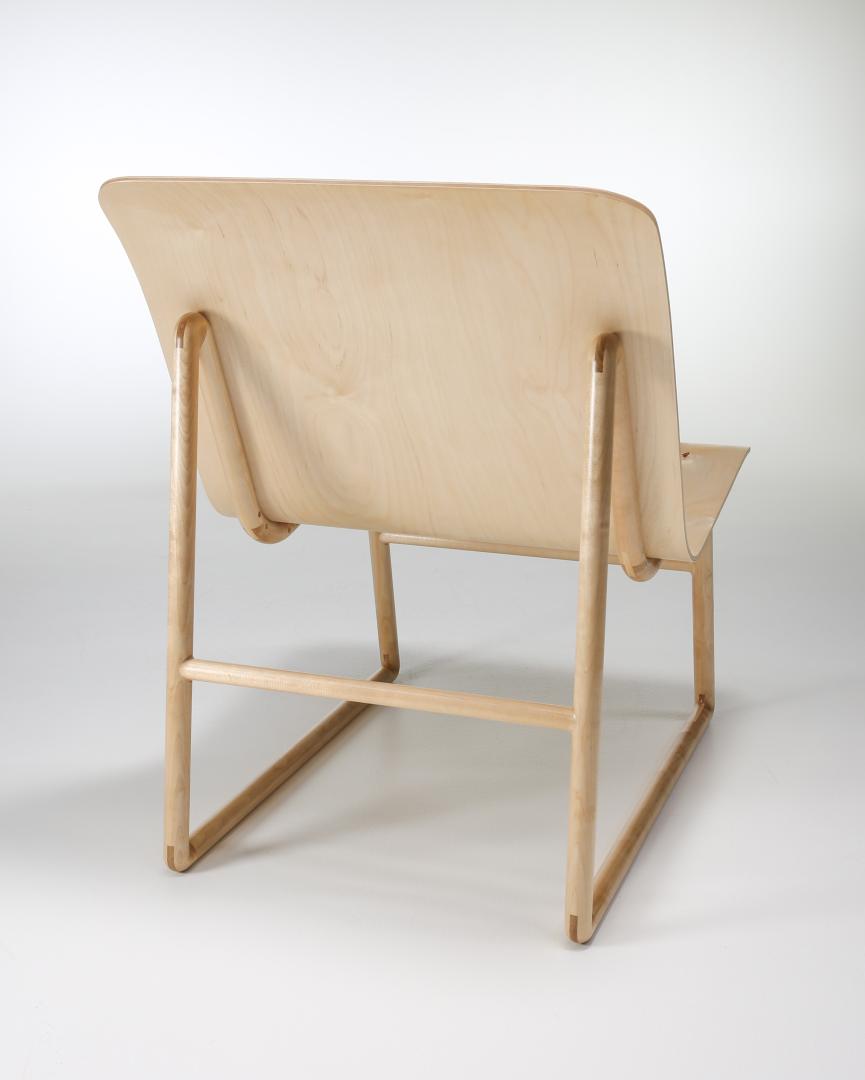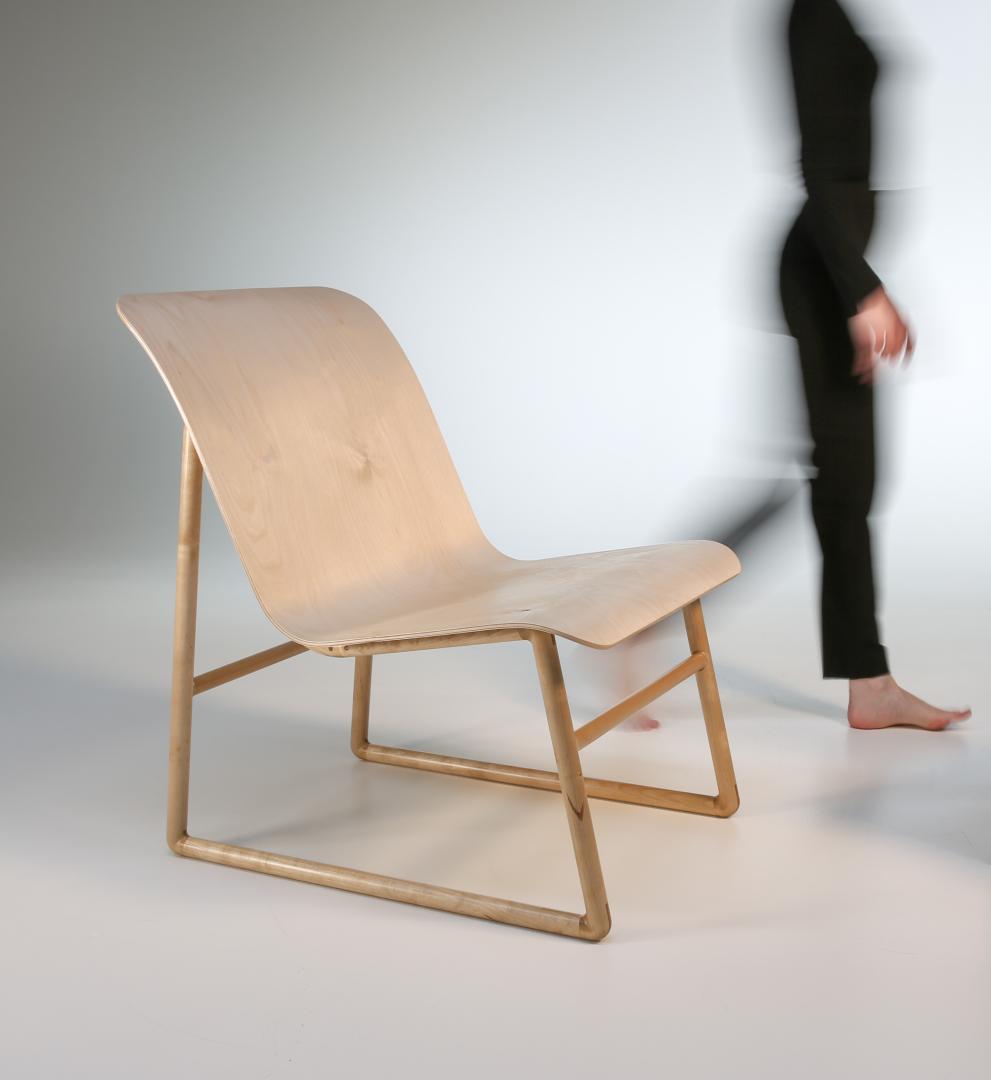ima
Basic information
Project Title
Full project title
Category
Project Description
Ima is a lounge chair to unwind. The shape of the frame that follows the seat is quite simple, the kind of simplicity admired from the beauty of everyday things. With its unassuming nature, the chair expresses beauty through sincerity, coexisting with the environment. While touching the wood with its natural imperfections, evidence of the tree’s life, it is possible to stop from our busy routines and return to the essence of living, reconnecting with nature and ourselves.
That time is now. Ima.
Project Region
EU Programme or fund
Description of the project
Summary
At present, the world we are in is continuously changing, with us rushing after it. Unconsciously, we are adapting to the standards of constant productivity and mass consumerism that characterize modern society at the expense of physical and mental well-being. Thus, little consideration is given to mindfulness and self-care that, instead, restore our relationship with the natural environment.
The project draws attention to the value of the present moment through a wooden furniture piece, which embodies Japanese aesthetics and Finnish minimalism. This combination results in the production of a lounge chair that expresses its unassuming nature through sincerity.
The bodily sensations perceived while crafting the physical product emerge in a conscious understanding of the responsibilities designers bear in taking decisions while designing. These can lead to expected or unexpected outcomes: here stands the Japanese wisdom of accepting the changes and trusting the process. Acknowledging the tools and materials as part of the art makes the designer reflect on the relationship that bonds him/her to the craft piece. Thus, he/she will be apt to cherish every moment, not only focusing on the final result. The lounge chair aims to let the designer and the user realize the importance of life small nuances: the former while crafting the furniture, the latter while lounging on it.
It appears simple in shape, the kind of simplicity to be admired from the beauty of everyday things. Yet, the imperceptible details and imperfections of the wood are evidence of the tree’s life and are vulnerable to the changes that will occur over time.
Taking an instant to pause from our busy everyday life and care for the little moments foster the nourishment of our physical and mental health. Therefore, the designer will need to be conscious of the surrounding environment and situation, making choices that are longing for a re-connection with nature and the self.
That time is now. Ima.
Key objectives for sustainability
The decision of using local wood for the lounge chair, in particular Finnish birch, has been undertaken because it implies the preservation and use of local materials: artefacts made from natural materials help us realizing our closest connection with the natural environment. Furthermore, wood possesses healing properties for the human body when we look at it, touch it or smell it.
Since the items are to be experienced every day, this feature of intimacy is a natural necessity because people usually tend to place their objects for everyday use where they are easily accessible, close to them. They touch them, take them in their hands and exploit their functionality. In this way, the users are likely to become more attached to their products. Besides, creating a long-lasting piece, especially if made with natural materials, encourages a conscious use of the product, thus promoting less waste and, in a broader view, reducing consumerism. With his or her choices, the designer can improve people’s lives and change the surrounding, raising awareness on important topics that need attention and, in some cases, intervention. These determined choices bring along significant responsibilities because designers’ actions have an impact, be it direct or indirect, on both the human and natural world. Thus, the space understanding in which design occurs, its resources and constraints, what it can offer or limit assumes relevant importance. The crafting of a furniture piece that exploits the available surrounding material resources results in a better awareness of the impact that humans, and designers, have on the living environment.
The overall aim to reduce the disposable practices, still steadily present nowadays in our society, starts from here: by increasing and preferring the use of materials prone to age will foster a re-discovery of our relationship with nature, leading us to a gentler acceptance of the fleeting beauty of life.
Key objectives for aesthetics and quality
Due to its organic nature, wood is vulnerable to the effects of weathering and human treatment, such as discolouration, shrinking or cracking. Therefore, in the intimacy of everyday use, it is possible to witness the furniture beauty that will reveal its small changes and imperfections over time. Moreover, the material selection determines the relationship between the object and space around it, between the item and the user. Merely through their physical use, the users are more conscious about the items identity and potential. The material space they occupy, the shape, colour and texture that define their unique peculiarities result in awareness of the surrounding world and the self. The affection for the product is grounded not only on material characteristics but also on the subjective emotions evoked in and impressions perceived from the user. The relation between human and object concerns the lifespan of the latter, undoubtedly determined by several factors, such as the situation and the different ways of its use. Besides, a good design product aims to provide as much durability as possible, but at the same time, it should not limit the possibility for personal interaction. The piece should be lived and consumed by the time of employment, which will confer its inestimable value of uncommon beauty. Consequently, care and attachment will become an integral feature that restrains the artefact from the consumerist fashion of throwaways.
Key objectives for inclusion
More than forcibly adapt to an already broad furniture market, the chair aims to arouse a sensitivity towards to oversaturated lifestyles of modern society. Through the crafting of pieces made with material prone to age, it is possible to cherish every moment that will foster a closer connection with the natural environment. Moreover, the furniture wants to encourage not only an awareness of the material world we are in but also a spiritual longing for a more conscious living. The acknowledgement of the natural resources employed for making the craft piece helps us realize the fleeting nature of life. Therefore, the preservation of them appears to be essential than ever before for our living. Without respect for nature, our material existence would not be possible anymore. Thus, the product stresses the meaning that needs to be given to the natural materials because the closer we are to nature, the safer we are. It is man´s responsibility to care for the surrounding ecosystem because he is an integral part of it.
The relationship that bonds humans to nature needs to be maintained and nurtured. For this reason, the crafting of the lounge chair has taken into account the material properties and limits: accepting these offered a more intimate understanding and union between artefact and designer.
Innovative character
From the challenging days experienced in particular this past year, the need for a corner for the nourishment of the mind appeared to be essential than ever before to remind us that our bodies are not meant to keep working ceaselessly and be overstressed. Instead, we should give them enough time to rest and recharge. The use of woodworking crafting techniques combined with computer numerical control machining resulted in a unique product whose aim is to improve human well-being. Following ancient aesthetics from the Japanese traditions and Finnish minimalist design, the artefact helps to create a moment of unique connection with the living environment and the self. Therefore, the importance given to the natural materials has been highlighted by applying more modern production ways that eventually endowed the chair of its configuration.


